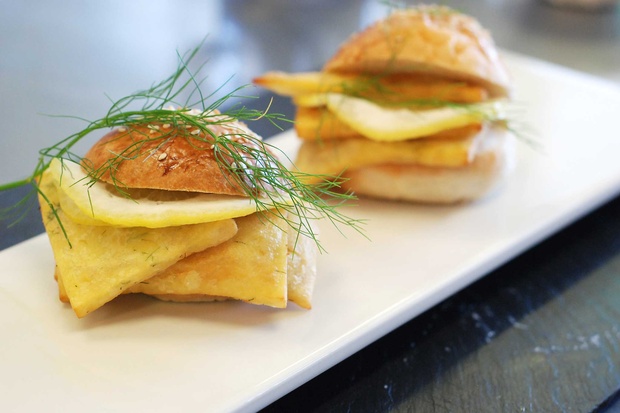According to the Food and Agriculture Organization of the United Nations, street food is “ready-to-eat foods and beverages prepared and/or sold by vendors or hawkers especially in the streets and other similar places”.
Here are some examples of street foods you’ll find in the Belpaese.
Naples
Made even more delicious with the warm weather of southern Italy, street food in Naples is affordable for all and varies from sweet to savoury specialties.Naples is synonymous with street food: from the city’s centre to its outer suburbs, you’ll find stalls selling local dishes which will give you a taste of local traditions.Fried foods are typical of Neapolitan cuisine, from potato croquettes, known as crocchè, to the city’s version of arancini, battered vegetables and even fried pizza.Frittatina di pasta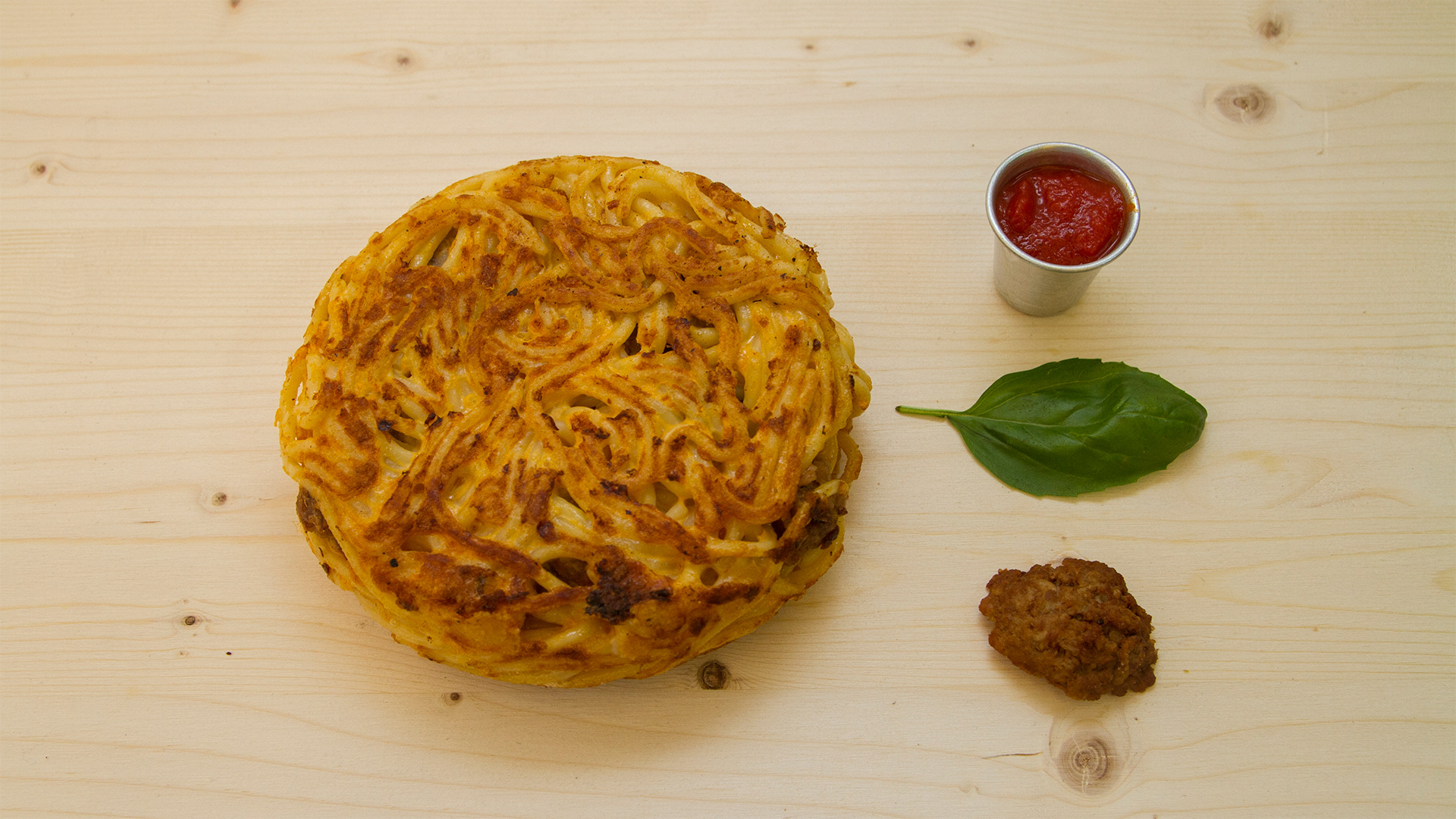
One of Naples’ most totemic street foods is take-away frittatina di pasta, which has a few differences from the frittata di maccheroni.This dish is a fried fritter of bucatini or spaghetti mixed with béchamel and stuffed with a delicious filling made of ham and peas or mince, peas and provolone or mozzarella.Another simpler version is made with a ham and provolone filling.The pasta is coated in a batter made from water and flour, then fried.This dish is eaten hot while strolling through the streets of Naples or as an entrée in pizzerias.
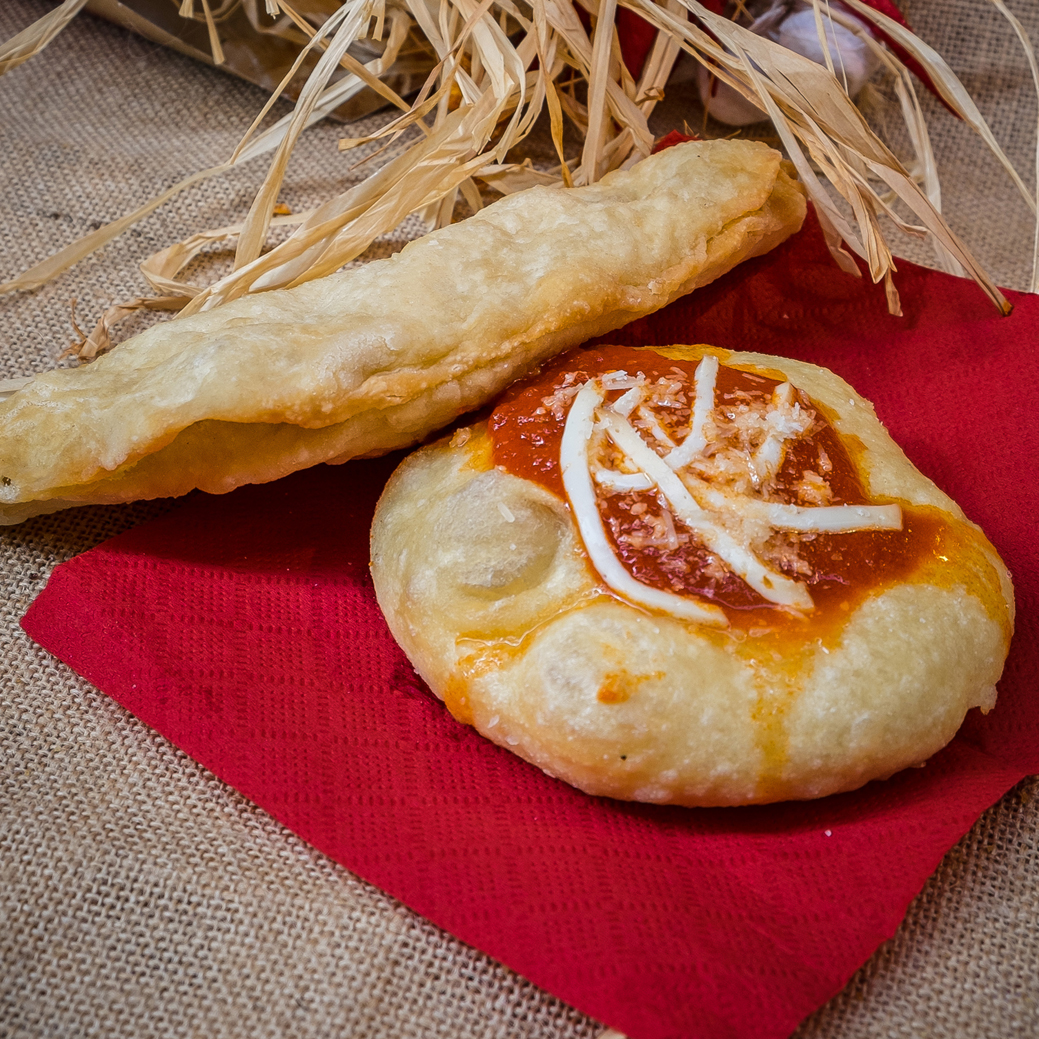 This typical Pizza fritta
This typical Pizza fritta
Neapolitan dish was once a modest one, prepared with cheap ingredients like flour, tomatoes, provolone and basil.It was the alternative to oven-cooked pizza during post-war times, when even a simple Neapolitan pizza was considered a luxury.As the topping was the most expensive part, people began stuffing the pizza dough with cheaper ingredients like ricotta, pork crackling and pepper, and frying it.The main difference between this dish and normal pizza is that it’s fried in vegetable oil instead of cooked in the oven.
Genoa
From focaccia all farinata to cones filled with fried fish, street food is integral to Ligurian cuisine.In Genoa, food is everywhere you look, and you’ll run into it wherever you go: along the elegant streets in the city’s historical centre and in every main square.
Farinata Farinata is a dish made from chickpea flour, water, oil and salt.The mixture is cooked in a wood-fired oven, in a shallow copper tray, and the result is a thin pancake that is crunchy on the outside and soft on the inside.The few and simple ingredients used are measured out carefully and the dough has to be cooked at a very high temperature for the perfect texture.At one point, this was labourers’ favourite dish because you could eat it while on the go and in just a few bites.Fried fishLocals love fried fish, which used to be served along the waterfront at Porto Antico.It used to be the preferred dish for dock workers, and is now considered by tourists as Liguria’s version of fish and chips.
Farinata is a dish made from chickpea flour, water, oil and salt.The mixture is cooked in a wood-fired oven, in a shallow copper tray, and the result is a thin pancake that is crunchy on the outside and soft on the inside.The few and simple ingredients used are measured out carefully and the dough has to be cooked at a very high temperature for the perfect texture.At one point, this was labourers’ favourite dish because you could eat it while on the go and in just a few bites.Fried fishLocals love fried fish, which used to be served along the waterfront at Porto Antico.It used to be the preferred dish for dock workers, and is now considered by tourists as Liguria’s version of fish and chips.
Florence
Buying a traditional panino from a street vendor and savouring it while walking around Florence is the perfect way to soak up the Renaissance city’s splendour.Lampredotto is the city’s most famous street food, but there are many to choose from!
Lampredotto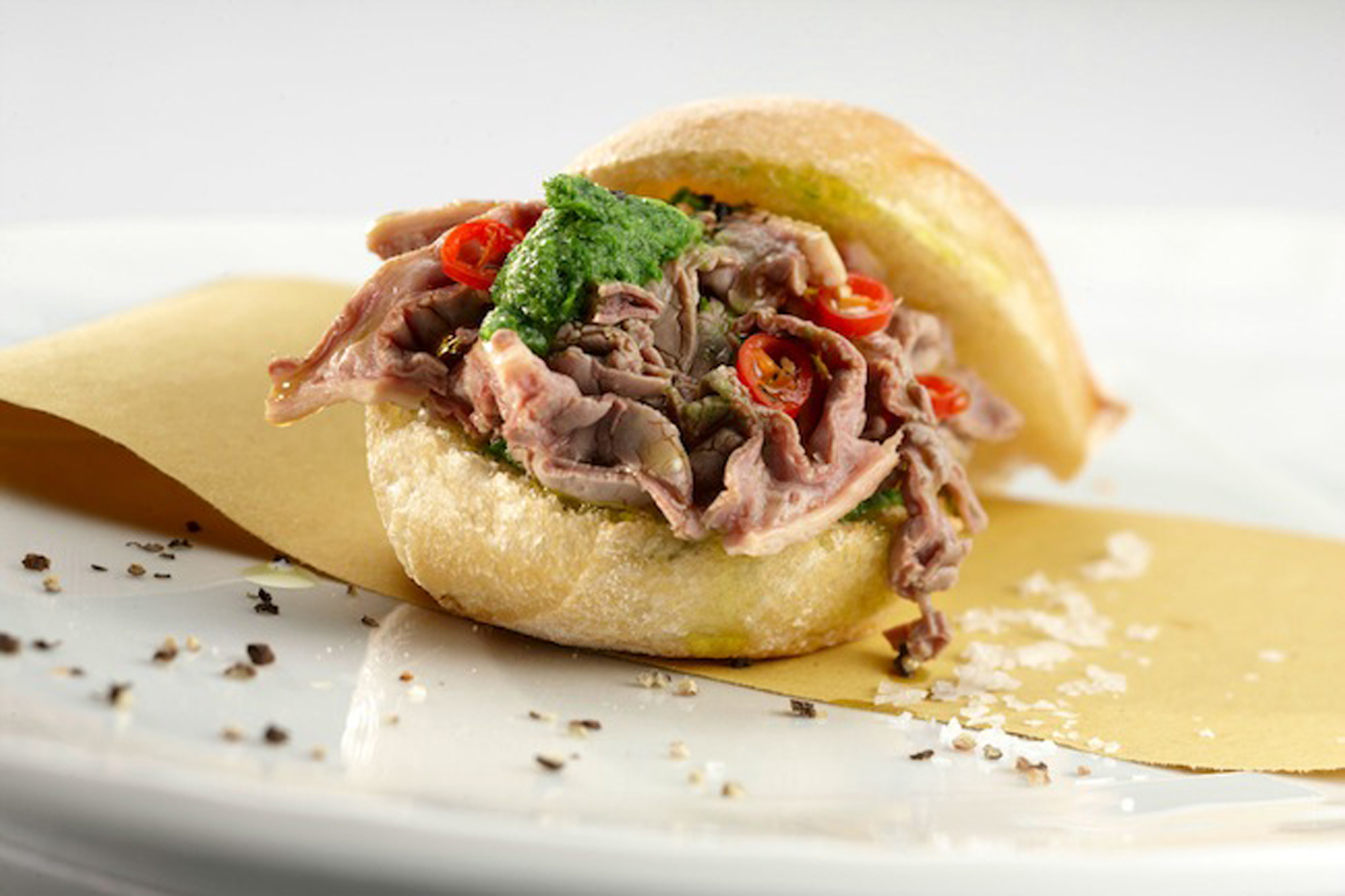 Lamprey was adored by both English and Florentine nobility.Seeing as this specialty wasn’t accessible to everyone, locals decided to find an alternative which was less expensive but just as tasty.The poor population had nothing but offal and, using one of the four stomachs of a cow, it breathed life into Florence’s most famous street food to date.But only in recent years has this street food taken on its classic form: that is, that of a panino with salad, sauce and offal.
Lamprey was adored by both English and Florentine nobility.Seeing as this specialty wasn’t accessible to everyone, locals decided to find an alternative which was less expensive but just as tasty.The poor population had nothing but offal and, using one of the four stomachs of a cow, it breathed life into Florence’s most famous street food to date.But only in recent years has this street food taken on its classic form: that is, that of a panino with salad, sauce and offal.
Coccoli fritti
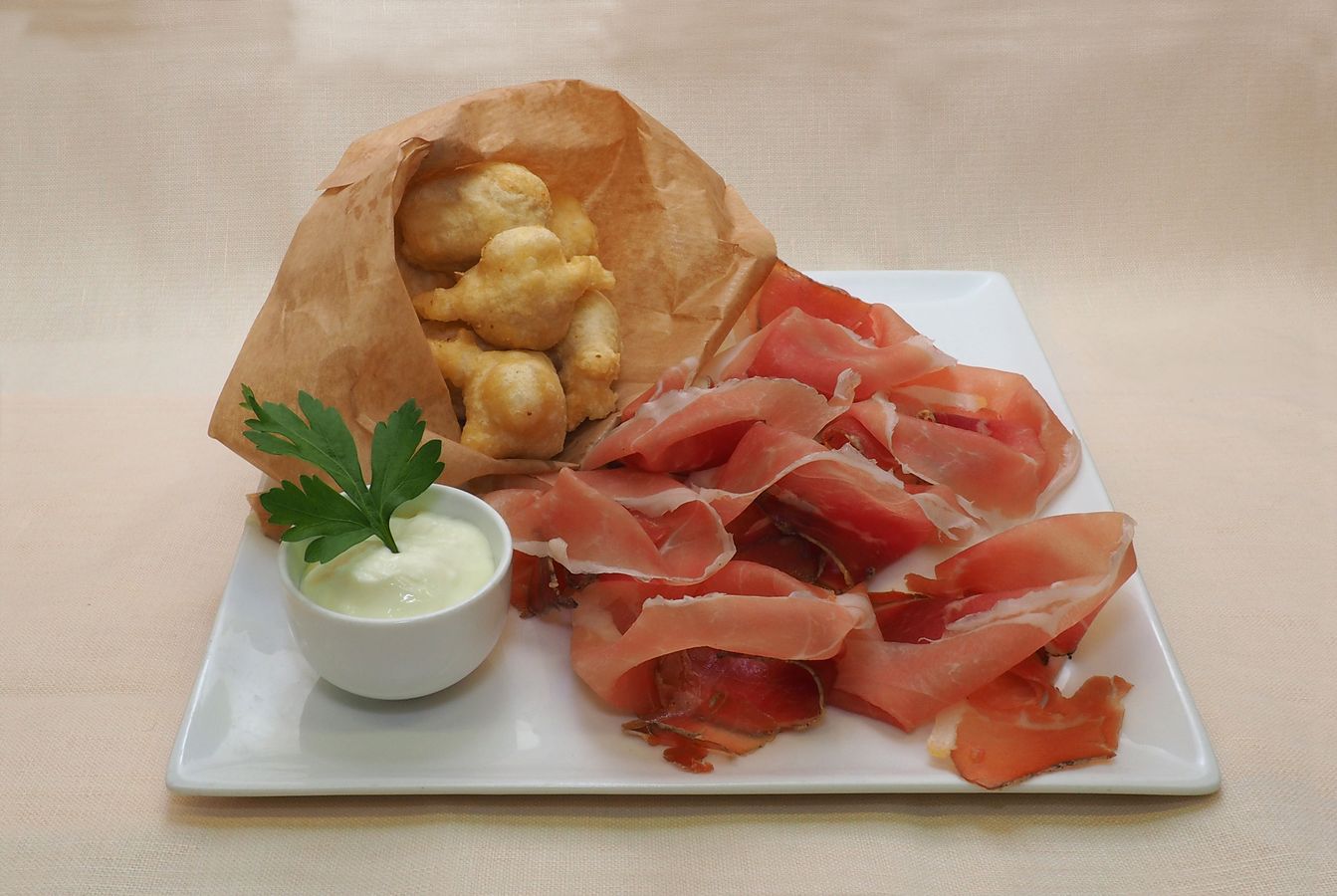 This street food consists of balls of leavened dough sold in paper cones.Today you can also find this dish in restaurants, always paired with prosciutto and stracchino cheese.It’s not known exactly where the word coccoli comes from: some people associate it with coccole, which is the Italian word for the fruit on cypress trees; others link it to cuculli, which are Ligurian chickpea fritters.In Prato and the Mugello area, these fried treats are called ficattole, perhaps because originally figs, or fichi in Italian, were incorporated into the dough.Florentines claim the name of this specialty comes from the word coccola, Italian for cuddle or pamper, as they believe it’s a bite-sized delicacy which you can treat yourself to.Traditionally, coccoli fritti were a snack for children or local artisans.
This street food consists of balls of leavened dough sold in paper cones.Today you can also find this dish in restaurants, always paired with prosciutto and stracchino cheese.It’s not known exactly where the word coccoli comes from: some people associate it with coccole, which is the Italian word for the fruit on cypress trees; others link it to cuculli, which are Ligurian chickpea fritters.In Prato and the Mugello area, these fried treats are called ficattole, perhaps because originally figs, or fichi in Italian, were incorporated into the dough.Florentines claim the name of this specialty comes from the word coccola, Italian for cuddle or pamper, as they believe it’s a bite-sized delicacy which you can treat yourself to.Traditionally, coccoli fritti were a snack for children or local artisans.
Palermo
This Sicilian city is undoubtedly Italy’s capital of street food.Even Forbes agrees with this statement.From sfincione to arancine and panelle, Palermo boasts a range of specialties which have made it fifth in the world rankings for street food.It’s also home to a festival which celebrates street food and its important role in the city’s history: street food was originally made by people living on the street level of buildings using the leftovers of the rich.The different types of street food on offer in Palermo reflect the city’s rich culture and its myriad inhabitants over the centuries.PanelleThis is one of oldest examples of Italian street food.Panelle are chickpea fritters served in bread with fresh parsley.They taste best seasoned with salt and lemon and eaten on their own, or served in soft bread covered with sesame seeds.This specialty dates back over 1000 years: the Arabs, who inhabited Sicily until AD1000, were the first to experiment with chickpea flour which, when combined with water, has a texture similar to polenta.When the island was dominated by the French, people began frying panelle.Palermo was the first city to embrace this dish, which was enjoyed even by the aristocrats.
Babbaluci This street food consists of snails sautéed in oil and garlic and seasoned with pepper and parsley.Those who sell this specialty on the streets of Palermo are called babbaluciari.This peculiar meal can be tasted in the district of Kalsa, which served as a fortified citadel when Palermo was under Arab rule.The name comes from the Arabic word for pointed women’s slippers, babush.Babbaluci are prepared for celebrations in honour of Saint Rosalia, Palermo’s patron saint, in July.Days before the event, you can already buy the snails at greengrocers, which store them in large jute sacks.The babbaluci are traditionally eaten while watching the fireworks display on the evening of the celebrations.
This street food consists of snails sautéed in oil and garlic and seasoned with pepper and parsley.Those who sell this specialty on the streets of Palermo are called babbaluciari.This peculiar meal can be tasted in the district of Kalsa, which served as a fortified citadel when Palermo was under Arab rule.The name comes from the Arabic word for pointed women’s slippers, babush.Babbaluci are prepared for celebrations in honour of Saint Rosalia, Palermo’s patron saint, in July.Days before the event, you can already buy the snails at greengrocers, which store them in large jute sacks.The babbaluci are traditionally eaten while watching the fireworks display on the evening of the celebrations.
font: https://ilglobo.com.au/news/44931/a-guide-to-traditional-italian-street-food/
